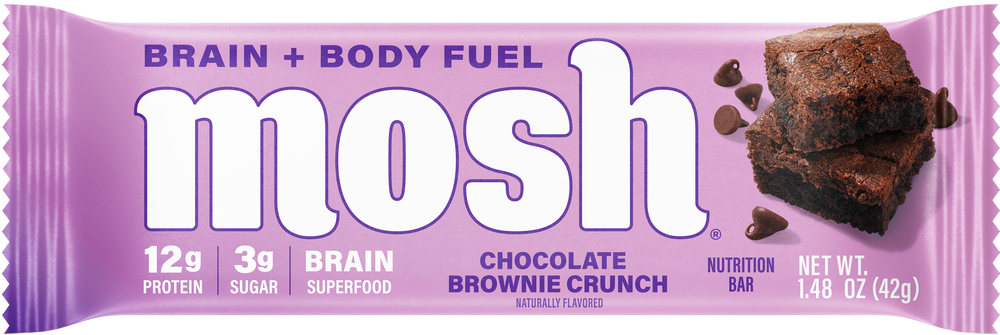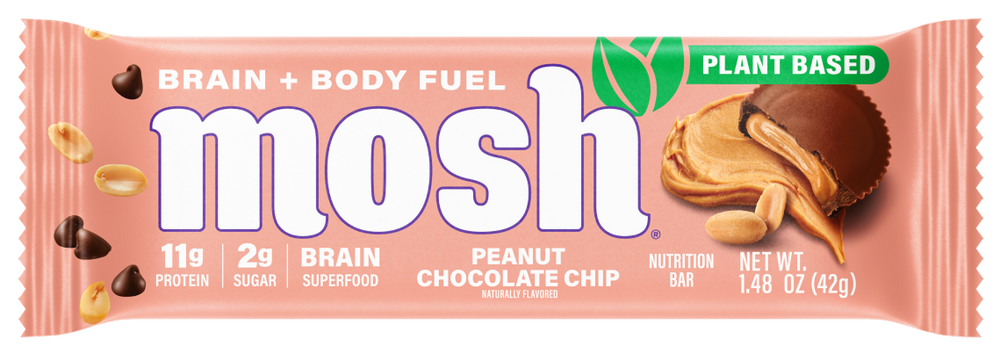Disclaimer: This article is for informational purposes only and is not intended to serve as medical advice. Always consult your healthcare provider before making changes to your diabetes care plan.
Diabetes has become an increasingly common medical concern in the United States over the last few decades. The CDC estimates that roughly 37.3 million (11.3 percent) Americans currently have diabetes.
While this estimation includes both types of diabetes, the overwhelming majority of cases are of type 2 diabetes. It’s possible to develop type 2 diabetes at any age, but it’s especially common for symptoms to appear in middle-aged or older people.
Another alarming statistic is that the CDC estimates that more than 96 million Americans have prediabetes. Prediabetes is when your blood sugar levels are higher than normal but not high even to be considered type 2 diabetes.
The good news is that prediabetes can be reversed with proper care. Various treatment options are available for anyone diagnosed with type 1 diabetes, type 2 diabetes, or prediabetes.
Perhaps the most commonly recommended treatment is to follow a healthier diet. It’s pretty easy to find a wide variety of diets online that can support overall health for your body and mind. The keto diet is one of the most popular diets to make these claims.
What Is the Keto Diet?
The ketogenic diet (keto for short) is centered around reducing the intake of carbohydrates and replacing them with healthy fats. The concept of a low carbohydrate diet has been around for decades but reached a new level of popularity in the 2000s when the Atkins diet went mainstream.
Several modifications have been made to low-carb diets in the years since. While the details can vary, the main goal of these diets is to place your body into a metabolic state known as ketosis.
Ketosis is a process that occurs in your body when you don’t have enough carbohydrates to burn for energy. Under normal circumstances, your body breaks down the carbohydrates you eat into glucose.
Glucose, commonly known as blood sugar, is the main energy source for your body's various cells, tissues, and organs. During ketosis, the body can’t access these carbohydrates. As a result, the liver will break down stored fat and produce ketones as an energy source instead of glucose.
The keto diet is very flexible and has several different variations. These are a few examples of the most common version of a keto diet:
- Standard Ketogenic Diet (SKD). This low-carb, moderate protein, and high-fat diet contains 70 percent fat, 20 percent protein, and 10 percent carbs. In other words, you would limit your diet to around 20 to 50 grams of carbs and 40 to 60 grams of protein. There is no set limit for fat intake on an SKD.
- Very Low Carb Ketogenic Diet (VLCKD). This diet is very similar to the SKD but with a further reduction of carbs. A typical VLCKD includes 75 percent fat, 20 percent protein, and five percent carbs. The VLCKD is essentially just a more extreme version of the SKD as there doesn’t appear to be any additional benefits that come from following it.
- High Protein Ketogenic Diet. This diet is very similar to the SKD, but it includes a higher allowance of protein that can be beneficial for building muscles more efficiently. An example of this type of diet would consist of 60 percent fat, 35 percent protein, and five percent carbs.
- Calorie Restricted Ketogenic Diet. Adults' recommended daily calorie intake varies based on age, sex, environmental factors, activity level, hormonal status, and pregnancy. It can range from 1,600 to 2,400 for women and 2,000 to 3,000 for men. This low-calorie diet operates the same ways as an SKD, but a much higher emphasis is placed on staying below a specific low-calorie threshold.
- Cyclical Ketogenic Diet (CKD). Athletes often use CKD to replenish and repair their muscles following workouts. A standard CKD will typically include five days of an SKD followed by two days with a much higher emphasis on eating carbohydrates.
- Targeted Ketogenic Diet (TKD). The TKD revolves around following the SKD, except that all carbs are consumed around scheduled workout periods. The TKD is essentially a compromise between the SKD and the CKD. You wouldn’t load up on carbs for a day or two like the CKD, but you wouldn’t be depriving your muscles of the energy they need during workouts either.
- MCT Ketogenic Diet. The outline of this diet is the same ratio as an SKD, except there is a much higher focus on using medium chain triglycerides (MCT) to achieve the desired fat content. MCTs are most readily found in coconut oil but are also available as a supplement in the form of MCT oil. This heavy emphasis on using MCT is that they can help produce more ketones than the long chain triglycerides in dietary fat.
- Intermittent Fasting. The idea of intermittent fasting consists of switching between periods of fasting and eating regularly. You’ll be able to enter into a state of ketosis by fasting for several hours, and you won’t have to monitor your carb intake. The most common intermittent fasting schedule is to fast for 16 hours a day. However, some schedules reach as high as 20 hours of fasting daily.
Why Do People Follow the Keto Diet?
The primary reason that people follow these keto diets is to lose weight. As discussed earlier, ketosis helps to burn excess fat by breaking it down into ketones. These ketones are an alternative fuel source for your body.
The longer your body remains in a state of ketosis, the more fat it will need to burn to continue functioning properly. The goal of the keto diet is to maximize this period so that your body will burn as much fat as possible. As a result, people who follow a keto diet lose around two kilograms (nearly five pounds) more than those who follow a low-fat diet.
The way that the keto diet works is fairly simple. The vast majority of your stored fat is known as subcutaneous fat (in between your muscles and skin).
Subcutaneous fat is commonly stored around the body's midsection, especially in the belly, butt, hips, and thighs. Entering into ketosis will mean that your body needs to tap into these subcutaneous fat stores, therefore reducing their overall size and helping you lose weight.
Losing weight isn’t the only reason that people follow a keto diet. The original purpose of the keto diet in the 1920s was as a potential treatment for intractable epilepsy. Doctors still typically recommend it to help reduce the frequency and severity of seizures in children.
Along with epilepsy, keto diets can also be beneficial for lowering the risk of developing cardiovascular disease. A keto diet can help to reduce overall body fat, blood sugar levels, and cholesterol. Each of these three characteristics is a well-documented risk factor for heart disease.
Is the Keto Diet Beneficial for Diabetics?
Following a keto diet may benefit people with prediabetes and type 2 diabetes mellitus. However, following a keto diet can be risky if you have type 1 diabetes.
Your body may enter into diabetic ketoacidosis, which occurs when you don’t have enough insulin and too many ketones. If you have type 1 diabetes, you should consult your healthcare provider before attempting the keto diet.
The keto diet provides two very important benefits for people with type 2 diabetes and prediabetes, however: it can help combat weight gain and lower your overall blood sugar levels (A1C levels).
Achieving both of these feats can help you to reduce the symptoms of type 2 diabetes and help manage its effects on your overall health. Alternatively, they could prevent you from ever developing diabetes if you are only in the prediabetes stage of diagnosis.
The reason that weight loss is so important is that being overweight or obese causes your body to endure increased levels of fatty acids, glycerol, hormones, cytokines, and inflammation. These conditions can eventually cause your body to develop insulin resistance.
Insulin resistance leads to a lack of control over blood glucose levels because the pancreas can no longer produce the insulin levels to overcome the resistance. The increased glucose levels and reduced insulin sensitivity can eventually develop into type 2 diabetes.
By losing weight, the conditions that lead to insulin resistance and uncontrolled glucose levels will decrease, which can help with diabetes management. Your cells will become more sensitive to insulin, so the pancreas won’t need to produce as much to lower your blood glucose levels.
As a result, your body can slowly regain control over your glucose, so you may not need to use as much blood sugar or diabetes medication.
How Does the Keto Diet Affect Brain Health?
Following a keto diet isn’t just beneficial for losing weight and managing diabetes; it can also benefit your brain. The main reason is that certain ketones might be a more efficient energy source for your brain than glucose.
Ketones can increase the number of mitochondria (the cell's energy factory) in your brain cells. That leads to more energy produced per every oxygen unit.
Substituting glucose with ketones is especially beneficial in people with neurodegenerative diseases. The hippocampus is a part of the brain that plays an essential role in learning and memory.
People with a neurodegenerative disease typically experience severe damage to their hippocampal cells, directly contributing to memory loss, learning disabilities, and cognitive dysfunction. The increased energy reserves of ketones might help ward off oxidation, neuroinflammation, and other disease stressors that exhaust and kill hippocampal cells.
Another benefit is that neurodegenerative diseases often deteriorate the brain’s ability to metabolize glucose properly. By using ketones as the primary energy source, the brain can maintain sufficient energy levels for cells.
Increased energy levels can help reduce the cognitive impairments caused by Alzheimer’s disease, Parkinson’s disease, and other similar neurodegenerative conditions.
Which Foods Can You Eat on a Keto Diet?
Following a normal diet will provide you with a ton of different ways that you can properly fuel your body and your brain. Unfortunately, keto diets are much more restrictive, so you’ll need to base your meals around very specific types of foods and eliminate others.
Here are a few examples of keto-friendly foods that you’ll need to include in your diet:
- Meat, pork, poultry, and fatty fish of all kinds
- Pastured whole eggs
- Plant-based milk
- Unprocessed butter, cream, and cheese from grass-fed animals
- Plain Greek yogurt and cottage cheese
- Avocados, nuts, seeds, berries, and healthy oils like olive oil
- Dark chocolate and cocoa powder
- Low-carb vegetables such as tomatoes, squash, peppers, onions, and leafy greens
- Unsweetened coffee and tea
Keto Is Good for Your Body and Your Brain
It should be clear now that keto can provide several benefits for your body and brain. There is also a large variety of vitamins and supplements that can improve your brain health. But why try to mix and match all these diets and supplements when you can simply go on a keto diet instead?
Before you start looking up meal plan ideas or creating an eating plan, it’s important to mention that a keto diet comes with some health concerns. You shouldn’t try a keto diet if you have type 1 diabetes, are pregnant, are at risk for heart disease, have had your gallbladder removed, or have a pre-existing kidney, liver, or pancreatic condition.
Sources:
Effects of Ketone Bodies on Brain Metabolism and Function in Neurodegenerative Diseases | PUBMED
Oxidative Metabolism: Glucose Versus Ketones | PUBMED
Type 2 Diabetes Remission: What is it and How Can it be Done? | Diatribe.org
Mechanism Linking Diabetes Mellitus and Obesity | PMC
Reversing Type 2 Diabetes | Diabetes.co.uk
Ketogenic Diet and Epilepsy: What We Know So Far | PMC
Taking Aim at Belly Fat | Harvard Health Publishing
Ketogenic Diet for Weight Loss | PMC
What Should my Daily Intake of Calories be? | NHS
Types of Ketogenic Diet | Diabetes.co.uk
Biochemistry, Ketogenesis | NCBI Bookshelf


























